Well, we’ve reached the end of the 6 weeks for the Creative Business challenge! And for the finale, we’ll be covering the single most asked-about topic from your handmade biz questions: marketing.
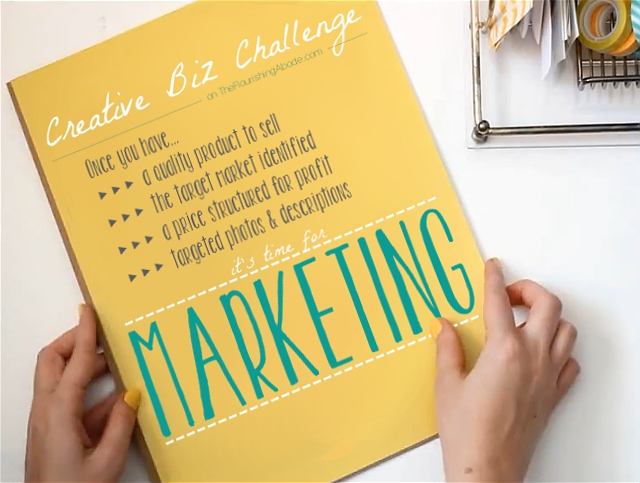
I left it for last because one of the reasons marketing can be so difficult is because there are other things about your business that have to be in place first to be able to market more easily, and so I wanted to cover those in the first in the series. I hope you found those posts helpful. If you missed them, they lay out groundwork for how to your marketing so much smoother:
‣‣‣ #1: Your product: the base of your handmade business.
The importance of having a unique, quality and highly marketable product.
‣‣‣ #2: Your target market: who and where are they?
The importance of knowing to whom you should be marketing your products.
‣‣‣ #3 Pricing: one of the hardest parts of running a creative business.
The importance of structuring for profit before marketing.
‣‣‣ #4 Product Photography and Descriptions: your product in its best light.
The importance of letting your product market itself as much as possible.
‣‣‣ #5 Product Photography and Descriptions: Double critique week.
Additional practical tips on your product’s photos and stories.
Once you have all these things in place, marketing becomes SO much easier. And one of the reasons for this is that once these are really firmly in place, your target market will start marketing your items for you.

Positive word of mouth is typically much more effective than marketing you do yourself. Social media sites are obviously a huge part of this. Facebook, Twitter, Pinterest, Tumblr – the list goes on and on. In general, when we talk about marketing and social media, we’re talking about how you as the shop owner are using those sites yourself. But I think the first way to look at it is in how your target market uses those sites.
This is where tips from earlier topics in this series come into play. For instance, I suggested to one shop to remove the huge watermark from the photos of their pillows, or at least to make it much less noticeable. I know that the desire is that your photos aren’t used without crediting you – but the unfortunate result is that the photos then aren’t used much at all. I sell art prints. I don’t watermark them. Yes, someone could steal them. (But I keep them at a small enough Internet-res file size that even if they did, there isn’t a whole lot they could do with it). But my prints DO get featured and shared all over the internet. I get tons of traffic from visual sharing sites (Tumblr, Pinterest, etc.) – and not because I was the one sharing my products, but because I have a product that is honed in on one specific target market, and I make it “user friendly” for that target market to share the word about my work. So, a few tips on letting your target market do the marketing for you:
1 – KNOW who your target market is and have a product that strongly appeals to them.
2 – Photograph your photos in a way that is appealing to your target market.
3 – Upload images that are a size that can’t be printed very large – but that is large enough that blogs, Pinterest, Tumblr sites, etc. can share it in an attractive way. (I recommend between 700-1000 pixels wide)
4 – If you use a watermark, make it so that it is not too distracting.
5 – Make sure there are social media sharing buttons on your site.
6 – Give occasional “call to actions” on your site, inviting people to share your site to Facebook, etc.
If you do all of this well, you’ll find that your target market will be doing a lot of your marketing for you. With all the buzz of social media, people love to find and share things that love. Let your target market do the same for your shop.
But, of course, there is the more typical marketing – the kind you do yourself. I’m going to break down this kind of marketing into two basic categories: online and offline.

Since we’re talking about running an online shop, I think online marketing is most effective, so we’re going to focus more on that one. There are four basic strategies to this that I want to point out that seem to give the best results in my experience, and then four strategies that I recommend avoiding.
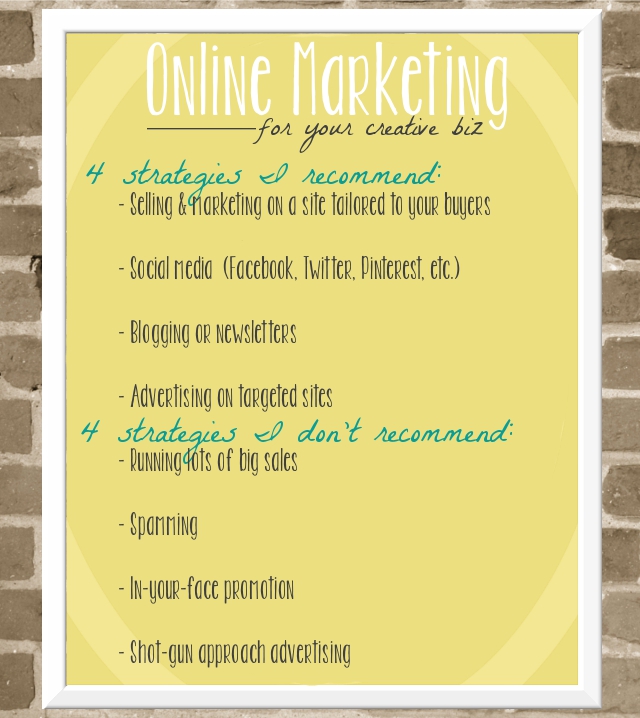
So, on the four approaches I recommend:
#1 – Selling and marketing on a site that is tailored to your target market. What I mean by this is sites like Etsy, Artfire, Folksy, iPublicate, etc. If there is an e-commerce website that is already working to try and bring in YOUR target market, you can tap into that by choosing to sell your wares there. I personally find Etsy to work best for me – they are the highest traffic. Sure, there are fees, and I could do it cheaper if I built my own site – but the number of hours I would have to put in to try to bring in even a fraction of the traffic into my site makes the relatively small fees of Etsy SO much more worth it. Once you are selling on a site like Etsy, there are a number of things you can do to market your products more effectively there:
– Tag and title your items with words and phrases which your customers are likely to use. Sellers often use phrases like “OOAK” and “ACEO”, whereas a customer is probably more likely to be searching “personalized” or “miniature size”, etc. Instead of starting your title with something artistic that no one is going to be searching (like, “Somber Midnight”), begin it with the words people are more likely to be searching (like, “Chunky Black Scarf”), and include the artistic name of the item somewhere else.
– Join a treasury team. Getting on a really effective treasury team does require great photos and a time commitment, but can be a great marketing approach, especially as you’re trying to first get found.
– Follow the merchandising reports. Etsy publishes regular reports on what trends and merchandising approaches are currently very effective, which is also a reflection of what types of items Etsy itself is looking for to be able to promote. If, for instance, royal blue is huge this season, and you have an item that color, but you’ve been calling it “bright blue”, it might help to change your tags to “royal blue” instead.
– List new items regularly. To show up high in the search results, there are a wide variety of factors that you need to have in place, such as how precisely the search term the custom is using matches the terms on your listing. But one of the factors is how recently the item has been listed. Rather than constantly renewing the same items, though, I find it more effective to add new items more often. Not only does this help you in the search, but also keeps your shop fresh.
#2 – Social Media Marketing.
I’ve posted some before on using Facebook and Twitter (which you can find here), but my basic thought is to use each social networking site toward a specific purpose that it’s own unique features tend to mesh with well. Since we’ve moved, I haven’t been doing as much social media marketing as usual, but here is my general use of each site:
– Twitter: I think of it as my open-door office. Good for conversations, good place for people to talk to you. Be conversational! Use it to talk to people one-on-one. I’ve heard Twitter described as the watercooler where you talk to your co-workers – use for networking with fellow entrepreneurs. Join group conversations and Twitter events like hashtag blogging discussions, etc.
– Facebook: I think of my business facebook page as kind of a backstage pass into my business. Good for posting photos, good place for people to share your content with others. Post photos of behind the scenes work, share photos from blog posts, put up polls to let people vote for new products, etc. Good calls-to-action to ask for on facebook: feedback on new products, sharing announcements with their friends, voting in polls, answering questions to generate discussion.
– Pinterest: I think of my pinterest as my gallery – a visual display of my taste and style. Good for pictures of helpful or interesting posts, good place for people to share and have things go viral. Pin pictures related to things your customers find helpful. Pin your own posts/items, but not too often. Watch your page’s source page, or search your shop name to see what people like to pin from your shop/site.
The social media sites you choose to use, and your use of each type of social media may vary from my approach. I think the helpful thing is just to have your own game plan for each site.
#3 – Blogging or newsletters.
These two are not mutually exclusive, you can do both! Personally, I prefer blogging and personally am not a big fan of doing a newsletter, but I know it works well for others. Basically, though, the purpose of doing a blog or newsletter is to have a repeated-touch way to keep in touch with your customers and/or target market.
If you run a blog, write posts about topics that solve the problems of your target market. For instance, if you sell hair bows for kids, then your target market is moms, so write blog posts about fun family activities or healthy recipe ideas, etc. If you sell art supplies, then your target are crafters and artists, so write blog posts about projects to make, how to organize your crafts, etc. Basically, offer valuable information to your target market for free, and that will draw them in. Have clear links to your shop, do occasional posts about a new line of items in your shop, put your wares in the sidebar, etc., to convert traffic to sales. For some more info on blogging, you can check out my series on blog design.
If you do a newsletter, don’t just add people to your newsletter list, or you could get into legal trouble for spamming. Instead, use a site like MailChimp or MadMimi to get set up, and the provide a way on your shop or blog for people to subscribe. Offer an incentive to subscribe – a free printable, a free shipping coupon for your shop, etc. Basically, offer something valuable for your target market for free to encourage them to sign up. Then use each newsletter to give one clear call to action.
#4 – Advertise on targeted sites. Consider finding sites that are highly targeted to your target market, and put your ad on there. Set a limit on your advertising spending, and don’t lock into a long term commitment of payments with a site before purchasing a relatively short time. For instance, try out one month of running an ad on that blog before you buy six months. See how it goes, and if it is worth your money.
As far as the 4 strategies that I recommend you AVOID:
#1 – Running lots of big sales. There’s nothing wrong with running the occasional reasonable promotion (like a giveaway, or a free shipping special), but if you’re often running big discount sales, it’s going to undermine with value of your product and make people think your prices are too high. Generally in a handmade biz, we’re not always making enough profit on our prices for the amount of time we’re putting in anyway – but if on top of that, we’re offering half off sales every couple months, people are going to get used to and expect that and won’t want to pay full price. Make sure you’re still making profit. I know right before we moved, I was trying to move some inventory and ran some sales to try to make some extra money before packing everything up. Looking back I think it did more harm than good.
#2 – Spamming. Just don’t do it. If you wouldn’t run into someone house or business, throw your flyers up in the air and yell, “CHECK OUT MY STUFF!”, and then run out again, then don’t do that online either. Don’t add people to mailing lists they haven’t signed up for. Don’t jump into someone else’s forum discussion and interrupt it with an ad for your shop. Be a real person, not a spammer.
#3 – In-your-face promotion. This is similar to spamming, in that it annoys people, that it isn’t effective, and that it puts a bad taste in people’s mouth toward your business … but the difference is that you’re doing it in places where you’re “allowed” to promote. For instance, on your Facebook page, in your product description, in your Twitter profile, etc. The key in those cases is to still talk like a regular person – not like a shouting advertisement. If your product description are meaningless hype, like “THIS SCARF IS AMAZING!! QUALITY MATERIALS!!! LOOK GREAT WHEN YOU WEAR THIS SCARF!!” or if your Facebook posts are just constant links without specific reasons or enticements, like “Come check out my great products!!! http://myshop.com” or if your Twitter profile is just an obvious list of search terms, like “art prints typography prints modern prints kitchen art”, or thing along those lines … um, yeah, that’s what I’m talking about avoiding. Talk like a regular person. Use meaningful words. Don’t tell me “this is fabulous!!”, instead show and describe the techniques, materials and inspiration of the piece, and gently allow me to realize it is fabulous, rather than just asserting it. If you want to share a link on Facebook, let me know why I would want to check it out (and just telling me “it’s great” doesn’t count). Let me know you’re launching this new line of aprons because you think this new style of pockets will really be helpful for cooks, and then give the link. That will get me to click. Just remember to be personable, not in my face.
#4 – Shot-gun approach advertising. You’re not trying to advertise to everyone. This is why if you’re selling handmade goods, you’re going to be able to get people to pay a high price on Etsy than on Ebay … because you’re focused on the right target market on Etsy. If you pay for ads all sorts of places that aren’t really honed in on your target market, you’re going to be spending a lot of money, and even if you do get some traffic from it, it’s not really going to increase your sales, because it’s not your target market.
Ok, so we’ve covered letting your target market do the marketing, and online marketing. Very briefly, now, offline marketing.

I think the degree of importance that offline marketing has is somewhat dependent on how much you’re actually selling offline. Personally almost all of my marketing is done online because I sell almost exclusively online. Here are a couple offline things, though:
– Have business cards. I always have my business cards with me when I go out. The fact that I run my own small biz comes up sometimes, and it is definitely handy to have business cards to hand out. When I asked for you to share your marketing tips on Friday, Alyssa mentioned that you can get 250 free business cards from VistaPrint. You still do have to pay shipping, though, which is about $11. I’ve gotten them from VistaPrint before, but personally my favorite place to get business cards is UPrinting.com.
– Encourage repeat business when you mail out your orders. Include business cards, perhaps a small free gift, or free shipping coupon code to encourage them to come back, and package the item they purchased in a very that is safe, secure, and attractive.
– Wear/use your product. If you make jewelry, wear it out. If you sew purses, carry one. If you make art, hang in on your wall. And have business cards on hand when someone compliments it.
– Consider craft shows, art fairs, farmers markets, selling in boutiques, etc. If you live in an area where these types of things are available, you might find them to be a valuable asset to your business.
OK! It’s the end of the last post of the Creative Biz series. Time to move on to our last critique…

This week is Abernathy Studios, run by Yvette Norris. Here is the question she posted:
One or two particular areas I would like to learn how to improve in my biz are: I feel like my store is too much of a hodge-podge and I probably should have a main theme. I also don’t know how to promote myself other than sponsoring blogs. I currently sponsor on ShrimpSaladCircus.com but just now started. We’ll see how that goes.
Great questions! Let’s take a look at her shop:
First of all, before we jump in, I notice that Yvette has made some changes to her shop since I first checked out her shop when she asked this question a few weeks ago. She had a wider variety of products, such as hair bows and fabric key ring wristlets. It looks like she is working on consolidating her products, as she mentioned she felt like the variety felt more hodgepodge.
Ok, first of all, let’s look at some things she is doing well…
– Photography skills: Her photos are beautiful. They are clear and crisp. The lighting looks great, and all the images are in focus, have proper white balance … and are even cropped nicely on the dolls. I love how we get a really clear view of the face in the thumbnail. She clearly knows how to use a camera! And the photography style is very cohesive.
– Descriptions of the dolls: You can read the love and the joy that goes into her dolls when you read their descriptions. There is personality, warmth, and quality conveyed, all without being in-your-face. Plus she did a nice job dividing it up into sections to make it easier to read. You can’t help but love the dolls, both from the photos and form the descriptions – that is exactly what photos and descriptions should do! It would be good to have that kind of description on all the items in her shop.
Now onto good, but could be improved:
– Profile: She has conveyed a lot of personality and info in an interesting yet concise way on her about page, giving a little of her history, and the joy she puts into her dolls. It’s very well done. I might recommend doing something similar on the profile page as well, since there is not much information there, but there are many links on Etsy that lead to the profile.
Things to work on:
– Shop cohesion and product focus: I can see from her question that having a cohesive theme is something of a struggle for Yvette. And I know how that feels – I ran a couple of different shops and had several types of products before I finally figured out what my theme was. It looks like she has narrowed down somewhat, but I still have a little trouble seeing the connection of items in her shop. I think a good thing to do would be to come up with a statement of what she wants her shop to be about. For instance, mine (which I also use as a tagline) is “FlourishCafe: a place for those who love food, books and art”. That is what my shop is about. It would be good to come up with some kind of summary like that for Abernathy Studios.
Since I’m not the maker, it is hard for me to know exactly what and where Yvette would like her shop to go, so the rest of this will be speculation.
Personally, though, it looks to me from the way she talks about them in her About page, and the way she writes about them in their descriptions (as opposed to how she writes in her other listings), that her dolls are the core product to her shop. The dolls also seem to be getting more views. The natural thought to me would be to make some more dolls. Dolls with different hair color, different skin color, some with freckles, etc., to have a variety of options. Maybe even do a listing for a custom dolls, where parents or grandparents could describe their little girl and have a doll made to match her? For instance, you could have a form for customers to fill out with hair color, hair type like curly or straight, features like glasses or freckled, etc. I could see people just loving that type of thing.
However, I do notice that she only has a couple dolls listed. Perhaps making the dolls is so time consuming that it is difficult to build up an inventory? In which case, the price may need to be raised, and then other products introduced that would be quicker to make and would be at a lower price point. Maybe her shop could be a celebration of young girls’ imagination? Extra special dolls, and maybe bring back the hair bows, and incorporate other such special girl items. I can totally see parents/grandparents/aunts/etc. coming to a shop full of your beautiful dolls and some other items that celebrate little girls’ imaginations and saying to themselves, “Oh, yes, THIS is the place I want to buy a gift for my little girl.” That’s the moment you’re wanting to create with your target market. I don’t know if that is the direction you would want to go or not, but it is one idea.
Another idea would be to go with a more home decor route. As far as the birdhouses, they are super cute, but from the info I can see from the preview before I click on it (the picture and the title), there really isn’t any way to know that it is not a real birdhouse to be used outside. I would imagine that if people see that and think it is a regular outdoor-type birdhouse, then click and find out in the description that it is not, that they would be disappointed, which makes it harder to sell. I’m not as familiar with that sort of decor type item, so I don’t know as much about whether it is actually a marketable product. But if it is, and it is something she wants to keep selling, I would recommend using the photos and title to make it clear that it is decor, not an outdoor birdhouse. Maybe let the first words of the title be “Home Decor Birdhouse” or something like that, and perhaps photograph it sitting attractively on a white book shelf, or as part of a table centerpiece, so that right away people are viewing it in a different context than a regular birdhouse. But in that case it would be so obviously different from the dolls – toys and home decor. You could choose to take your shop the more home decor route – I noticed on your facebook page you seemed to have a variety of more home decor related photos there.
Another idea for what you could do, since it seems from your blog and shop that you enjoy doing a wide variety of crafts – you could look into selling your own PDF tutorials, patterns and such, maybe write a crafty e-book to sell.
Of course, the particular direction of the shop is solely up to the shop owner themselves, so it is hard for an outsider looking in to give very particular guidance, not knowing what direction Yvette would be interested in taking her shop. But the overall advice is this: come up with a phrase that describes what your shop is about, and let that guide your shop cohesiveness.
– Marketing: This is one of those cases where I think once you have a more cohesive shop that appeals more strongly to a more narrow market, they will help to market your shop for you. For instance, if you started specializing in custom-made personalized dolls, I can see people sharing and recommending that online. Or whatever particular direction your chose – like if you started focusing more solely on home decor items. I just think right now since the items are for different people, it is harder for people to say, “Oh, this shop is SO right up my alley, I want to share it!” And I think it is harder, probably, for you to know who to share it with and who to market it to, due to the different target markets for different items.
I see you have a Facebook page, and that is great. I’d recommend posting no more than once a day, no less than a couple times a week. You might consider Twitter and see how it goes for you. Also, you have a great blog that could probably help you out a lot with traffic- I think the main thing you are missing is posting a lot more often. Maybe aim to post at least once a week, and start building some steadier traffic? That could help with marketing. Since you’re doing a lot of crafty posts, have you looked into submitting any of them to CraftGawker? That could also bring in a lot of traffic. I’d also recommend putting an Etsy mini in your sidebar – you can find it under “Your Shop” -> “Promote” -> “Etsy Mini”.
I would also work on marketing within Etsy itself, starting with tags and titles. Right now a lot of your tags are taken up with “orange” “yellow” “red” “soft”, and other single word adjectives. When tagging an item, think less about describing it, and more about how someone would search for it. You can still use those words, but try using them in tags like “soft handmade doll” or “red head doll” or “toys for girls”, etc. For some good ideas on tags, start typing one of your main words (like “doll”) into the search bar and see what suggestions drop down. Those are common searches. Play around with that and see what you come up with. Use more words in your title, and move the really important words to the front. For instance, in a doll listing, doll should probably be the first or second word. You might also want to look into joining an Etsy team. If you work on some of those things, your traffic from within Etsy should increase.
Anyway, I hope this has been helpful for Yvette, and for others as well! Running your own creative biz definitely takes time and strategy, so I hope this series has been useful to help focus on some high leverage tasks to make the time you spend more effective.
What marketing tips do you find useful? Whether from this post, or something you’ve heard elsewhere! :)
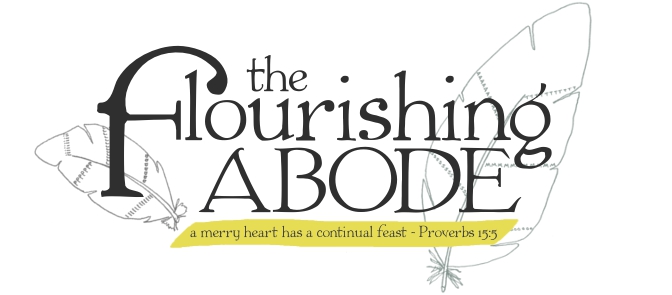
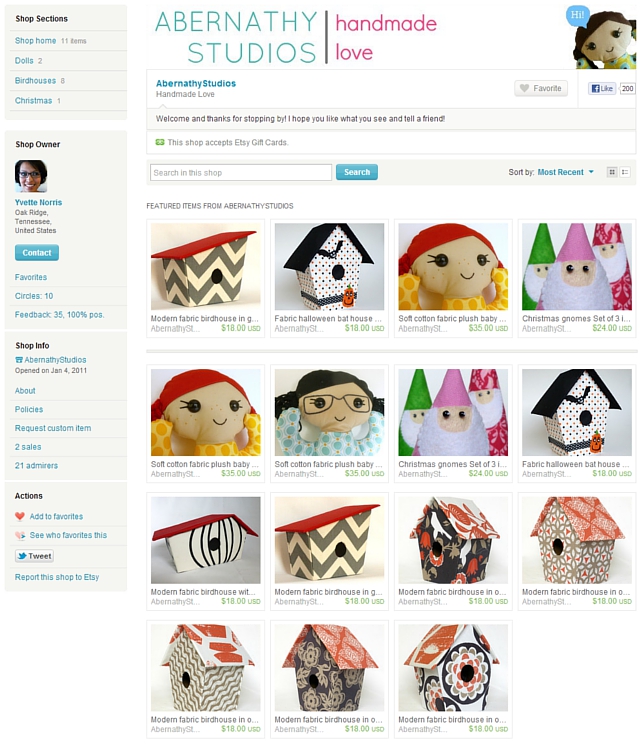

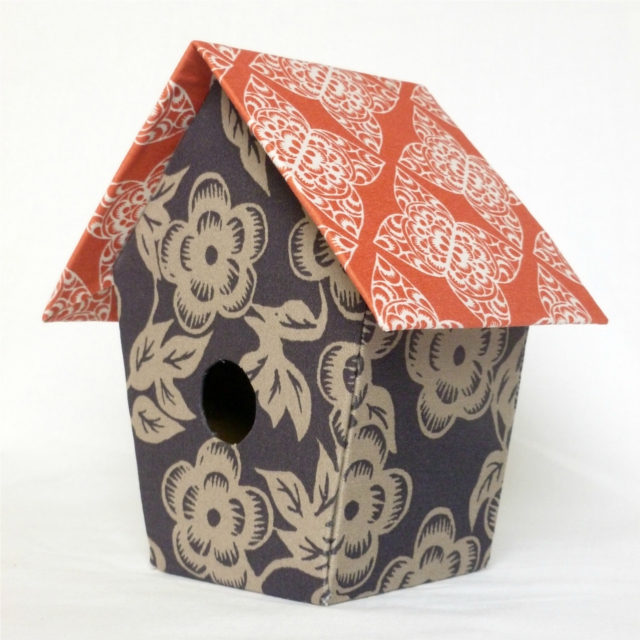

Again, a great post and so useful! I’m just sad it wasn’t my shop that got your insightful critique. I think an outsider’s look at my shop is just what I need right now. A pair of earrings for a shop critique? :D
I really like that you’ve stated the watermark problem in this and last post. I’m putting together holiday gift guides for my blog and wanted it to be something other Etsy sellers would benefit from, so I announced it in the Etsy success team. I’ve gotten about 100 entries, and it’s so sad to leave a cute item out just because the picture has the shop name stamped on it.
Oh, and one other thing about marketing. If you don’t have a blog yourself, you could offer a giveaway to another blogger whose audience matches your target market. Not all bloggers do giveaways for free, so I’d suggest you find someone who has already gathered more than a hundred followers, but is not yet offering sponsorship. An up and coming blog might be very interested in a giveaway and it’s a new audience for you as well to increase your customer base.
Oh, yes, good point about others’ blogs – thanks Hanna! And excellent point about at what point to catch a blog. That can be difficult to find, but it is a great strategy! Your shop is beautiful, by the way, I love it! :)
Thanks so much, April! You hit the nail on the head…. on everything. I really like your idea of little girls’ imagination. I do love to make things that children would like, little girls in particular. A lot of the listings that you found missing had expired and I wanted to hear what you had to say before I brought any of them back.
As far as my blog goes, I do market there and have an etsy mini in my side bar as well as at the bottom of the page. I used to keep up with my blog on a very regular basis and it was somewhat popular. I had posts on Craftgawker and Pinterest which really brought a lot of traffic but recently I started a new full time job and I had to abandon the blog. It really broke my heart because I put so much work into it. But yes, I did use my blog to market my shop but I felt like it was the wrong place to do it because the type of people that come to my blog are ones that could probably easily make the things that I sell. I have since left my blog up because I still get a considerable amount of traffic and there are many tutorials there that people are really liking.
I am curious to look into etsy’s teams, I’ve never explored that avenue. You have come up with a lot of really great ideas that I’m going to consider. I also really like the custom doll listing idea. I’ve thought about that but didn’t really know how to go about it. The dolls are the most special things in my shop but you are right, I don’t have many because they are very time consuming. Pricing is difficult for me to come up with because I myself can’t afford much and I often price according to what I would pay for something. It’s hard to imagine what higher income customers will pay.
Thanks for your advice and expertise! I have a feeling I have a long way to go but at least I now have a map! You are a special woman, thanks April!
Good luck on your shop, Yvette! Thanks for letting me use it in my post. :) And thanks for your kind words. :) Btw, did you know that up until about a year and a half ago, I lived in Knoxville for several years? We went back this summer, too. Not far from where you are, I see!
Oh wow! How neat! I just found out recently that another of my favorite bloggers is from Nashville and drives through Oak Ridge when coming to visit from DC. So cool. I would love to get to meet you one day if you ever come visit again!
Wonderful article. Very informative. I enjoyed the series! Thank you.
Thanks, Liz! :)
Great article! I just shared this with over 3000 people on Facebook!
Oh, thanks so much, Adelle! :)
I love this series! I’m trying to open a shop on Etsy by next year. The main problem I’m running into is pricing! I’ve read just about everything out there about pricing handmade items. I hand sew everything. I know that that is going to make my prices higher, but how high? How many people actually know (and appreciate) how much more work goes into something that is not sewn with a machine? How do I target those people (who understand why my prices might be higher then others) without alienating the people who don’t understand? I don’t want to shoot too low and not make a profit (because I NEED a profit), but I’m afraid of the prices that I’ve come up with based on the fact that a quilter friend of mine (who hand quilts on occasion) said that the minimum I should be paying myself is $10 an hour. A simple bag takes at least 3 hours. A dress or blanket could take up to 3 days, working at 4 hour intervals. Plus the cost of my materials….. Help of any kind is welcome. This has been a six month problem.
Thank you for all the marketing {& etsy} tips.
I am stitching away as fast as my fingers & baby girl let me so that I can open an etsy shop. Your blog series has helped me to better identify my target market. Thank you so incredibly much :)
-Emily-